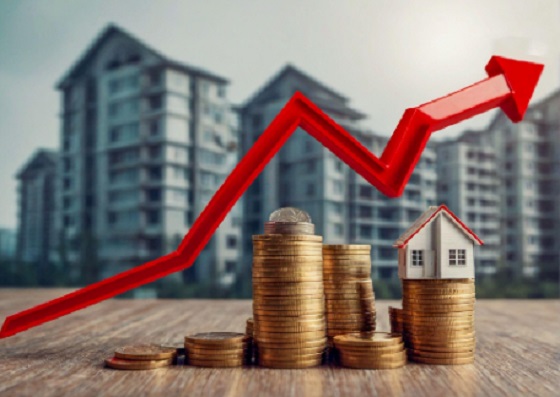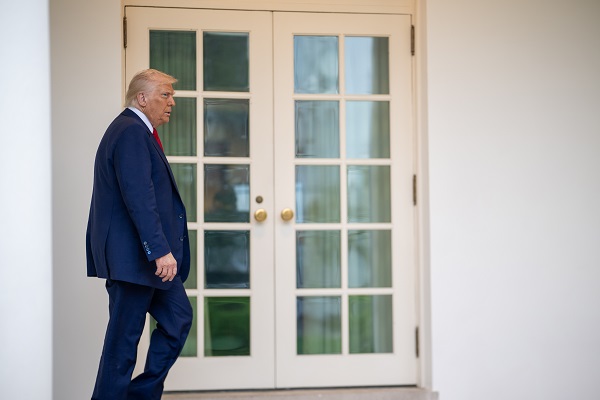Bruce Dowbiggin
Mamas, Don’t Let Your Babies Grow Up To Be Running Backs (Pt.2)
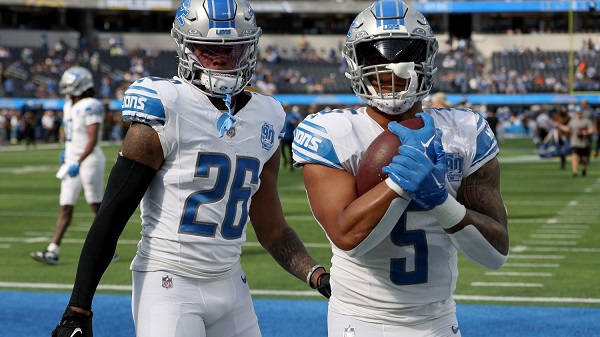
We were watching the NFL on U.S. Thanksgiving Day with a posse of passionate Detroit Lions fans. In between their efforts to convince us to return as Lions fans after our nasty divorce with the team a few years ago, they excitedly talked about the team’s dynamic running backs David Montgomery and Jahmyr Gibbs.
Montgomery is Thunder and Gibbs is Lightning as the Lions head toward what might be their first Super Bowl appearance. Ever. As in, not a sniff of a title since they played the NFL championship game in 1957. But we digress. Montgomery, who has 11 TDs, is signed at a comfortable $5.056 M per year on a two-year contract. Gibbs, who has 10 TDs, is on the second year of his rookie deal that averages $4,461,283 a year.
Naturally, the Lions fans want Gibbs signed to a deal so they don’t lose him when he’s a free agent in 2027. But here’s where it gets tricky. In a previous NFL, when RBs were prime attractions, Gibbs would be among the NFL’s top money earners when he’s free to take offers. It doesn’t work that way anymore. The days of Walter Payton and Barry Sanders are over. Even with a slight resurgence in the NFL’s running game in 2024 RBs are still values as penny stocks.
Last July we looked at the reality of two star backs coming off rookie deals. “Las Vegas Raiders RB Josh Jacobs looked at the reality of being a running back in today’s NFL and caught the 6 AM flight out of Vegas. New York Giants RB Saquon Barkley looked at the reality of being a running back in today’s NFL and signed a one-year deal for $10.1 million. The incentives in the deal will be very challenging for Barkley. He said he had an “epiphany”. Or maybe a chat with his banker.

Same situation. Different response. As players coming off their rookie-capped contracts both Jacobs and Barkley found a market that valued running backs just above place kickers on the economic totem pole. Prone to injury and undercut by a steady stream of star running backs emerging from the Draft, veteran running backs across the league now found themselves squeezed on short-term deals for what constitutes pocket change for quarterbacks.”
In the offseason Barkley ditched the Giants for a three-year deal with the Eagles that earns him $13 M with a lowly $3.8 M cap hit. The man who could well be the NFL MVP is 13th on the Eagles salary cap, squeezed between Milton Williams and kicker Jake Elliott. He’s hoping this breakthrough season will recoup the money the Giants declined to pay him coming off is rookie deal.
Jacobs, meanwhile, has become the Green Bay Packers MVOP playing for $ 12 M in the first year of a four-season contract. But the two of them are small fry next to QB Patrick Mahomes’ $450 M contract, Joe Burrows’ and Trevor Lawrence’s $275 M deal or Deshaun Watson’s guaranteed $230 M to stink it up in Cleveland. To say nothing of the $140.6 M going to Tampa Bay’s LT Tristan Wirfs or the $140 M deals for WRs Davante Adams of TB and Minnesota’s Justin Jefferson. How come?
It is, of course, all a matter of sports caponomics . (For more on the evolution of salary caps in sports leagues read our book Cap In Hand: How Salary Caps are Killing Pro Sports and Why the Free Market Could Save Them. brucedowbigginbooks.ca)

Scarcity drives value, and the most scarce commodity is not excellent running backs. It’s excellent quarterbacks. Scarcity is why left offensive tackles make more than guards and centres. It’s why cornerbacks make more than middle linebackers. It’s why these positions are drafted in the first round while running backs and others slide to the later rounds. Gibbs’ first-round selection by Detroit was widely seen as too early for the position and, thus, a cap mistake.
As we remarked in Cap In Hand, the NFL knew it was a two-tier league back in 1987 when it busted a strike by the NFL Players Association for free agency. “There had been no new CBA since the 1982 agreement expired in 1987. To drain the NFLPA’s bank account, the NFL had previously created a “Quarterback Club” marketing arm separate from other players. While the league’s top QBs and select others were handsomely compensated with bonuses and percentages of sales, the move denied significant marketing revenues to the rest of the players and the union.”
End of strike. You’d think that with agents advising RBs and the market establishing value running backs would put pride aside. Nah. Running back Le’Veon Bell described the process when he turned down guaranteed wealth in Pittsburgh in 2022. “My franchise tag was $14.5M, and I walked away from it,” Bell said on the AP Pro Football Podcast. “It’s a respect thing. You told me you were going to do this for me but you didn’t… I could’ve just ignored it, went inside the locker room and had been playing.
“But that wouldn’t have made me happy, and I’m sure inside the locker room, everybody would’ve felt it, and, as a team, we wouldn’t have been good. I feel that’s the same with Saquon. He’s trying to be the best he can, but obviously deep down, he’s not happy, because he wanted to be compensated. He still wants his teammates to be good, so he showed up.”
Bell’s own gamble didn’t work out, as he’s drifted from the Jets to the Ravens to the Buccaneers. Now he’s training to be a boxer. From leading man to bit player. He’ll never make up the money he’s lost by choosing to be a glamourous-but-unappreciated RB. But ask yourself, at what other position in what other league would the three best players at a single position be allowed to switch team from 2023-24?.
That’s what happened last winter when top candidates for 2024 OPOY— Barkley, Jacobs and Derrick Henry— all departed their former teams for slightly better paydays on the Eagles, Packers and Ravens. Doesn’t seem to make sense. Till you see 49ers star RB Christian McCaffrey injured again Sunday night in Buffalo with a PCL tear. Then you understand why teams are unwilling to take a longterm gamble on the man carrying the rock.
And why we’ll stay fans of the Buffalo Bills and their QB $258 Million QB Josh Allen for the time being.
Bruce Dowbiggin @dowbboy is the editor of Not The Public Broadcaster A two-time winner of the Gemini Award as Canada’s top television sports broadcaster, he’s a regular contributor to Sirius XM Canada Talks Ch. 167. His new book Deal With It: The Trades That Stunned The NHL And Changed hockey is now available on Amazon. Inexact Science: The Six Most Compelling Draft Years In NHL History, his previous book with his son Evan, was voted the seventh-best professional hockey book of all time by bookauthority.org . His 2004 book Money Players was voted sixth best on the same list, and is available via brucedowbigginbooks.ca.
2025 Federal Election
What Trump Says About Modern U.S. And What Carney Is Hiding About Canada
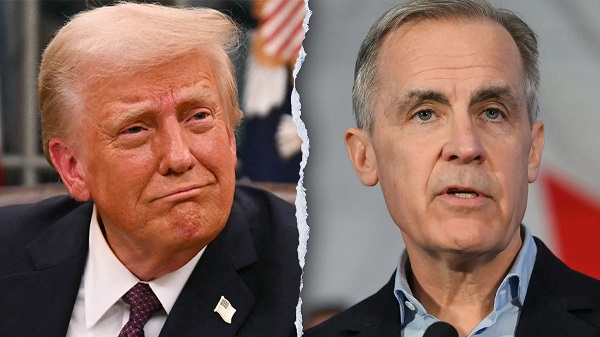
“Reporters once asked legendary boxer Rocky Graziano why he hugged his opponent after the guy had pounded him senseless for 15 rounds. “He stopped punching me, didn’t he?” That sums up the reaction of Boomer voters hugging Mark Carney after ten years of having Liberals pound them. They can rationalize any amount of suffering.”
The two looming figures in the current “hurry up before they find out who Mark Carney is” election are Carney, the transnational banker/ climate zealot/ not-Trudeau Liberal, and Donald Trump. Yes, Pierre Poilievre is running against Carney, but Carney and the Gerry Butts braintrust are running against the U.S. president.
And not just POTUS 45/47. They’re running against the SNL cartoon figure embraced by Canada’s mainstream media outlets. Depending on the day the Toronto Star/ CBC/ Ottawa Citizen iteration of Trump is “stupid”, “racist”, “sex fiend” and, for this campaign, the boogeyman who will swallow Canada whole. While these scribblers and talking heads themselves are going broke, they imagine Trump as an economic moron collapsing the western economy.
All the clever Conservative ads, all the Carney flubs, all the revelations of election rigging by Chinese operatives— none of it matters to Canada’s Boomers huddled against the blustering winds of Trump. They call it Team Canada but it might just as well be Team Surrender to people who are willing to keep the Liberals’ Gong Show going for another four years.
As they say, you’re welcome to your own opinion, you’re just not welcome to your own facts. And the facts are that Trump and Carney are representative of their separate nations in 2025. Before we address the parachute PM Carney let us suggest that CDNs weaned on Stephen Colbert and John Oliver have little idea why Trump is the most impactful American politician of the century so far.
But don’t take our word for it. Here’s Democratic comedian Dave Chappelle explaining why so many remain loyal to the former Democrat and reality TV star in the face of impeachments, criminal charges and yes, bullets. Chappelle, who lives outside the Hollywood bubble in Ohio, said, “I’m not joking right now, he’s an honest liar. That first (2016) debate, I’ve never seen anything like it. I’ve never seen a white male billionaire screaming at the top of his lungs, ‘This whole system is rigged.’

“And the moderator said, ‘Well Mr. Trump if, in fact, the system is rigged as you suggest, what would be your evidence?’ He said, ‘I know the system is rigged because I use it.’ I said ‘Goddamn’.
“No one ever heard someone say something so true. And then Hillary Clinton tried to punch him on the taxes. She said, ‘This man doesn’t pay his taxes,’ he said, ‘That makes me smart.’ And then he said, ‘If you want me to pay my taxes, then change the tax code. But I know you won’t, because your friends and your donors enjoy the same tax breaks that I do.’…
“No one had ever seen anything like that. No one had ever seen somebody come from inside of that house outside and tell all the commoners we are doing everything that you think we are doing inside of that house. And a legend was born.”
In short, Trump is what we want politicians to be. Aspirational, yes. But willing to act. We can take it. Yes, his truth is wrapped in multiple layers of balderdash and folderol. There is a preening ego. Self serving. Vainglorious. Opportunistic. Bombastic.
But he recognized that no one— GOP included— wanted anything to do with closing borders, ending foreign wars, levelling the trade barriers. So while Canadians whined, he took them on, and for that he’s been given two terms in the White House. You can understand why people wanted him dead last summer. He’s bad for the business he exposed in that debate with Hillary.
So Canadian liberals might sneer and condescend, but Trump’s answering to a legitimate voice in an America that was deceived and abused during Covid. And had a senile man as POTUS being manipulated by unseen characters behind the scenes.
Which begs the question: What in the Canadian character is Mark Carney answering to as he is dropped into the seat formally occupied by Justin Trudeau? The most obvious answer is Trump’s 51st state musings as he seeks to re-order the world’s tariff system. But what about repudiating everything he and his party stood for the past decade? How does that fit into the Carney identity?
While Trump has a resounding mandate to pursue the issues he campaigned on, Carney has a manipulated Liberal leadership contest, no seat and Mike Myers. Plus a media that owes its living to his party’s bribing them.

It would be hard to imagine more own goals than Carney’s record since the Liberals rigged his nomination. The China denials, the offshore tax evasions, the three passports, the renunciation of his entire work history, the re-hiring the worst of Trudeau’s cabinet, the bad body language… yet every gaffe increases his numbers in the purchased polls and the bought media. It will be an amazing story when it’s written.
But it’s not being written that way now. Because Donald Trump has activated Canada’s passion for authority and the expert class. While the rest of the world has awakened to the government’s deliberate manipulation of fear and white-coat reverence during Covid, Canada’s Boomers are still in awe of people like Carney. They still think the vaccines work. That The Science was behind it all.
So prepare for another 15 rounds of being slugged in the head by people who don’t have your goals in mind. Don’t say you we weren’t warned.
Bruce Dowbiggin @dowbboy is the editor of Not The Public Broadcaster A two-time winner of the Gemini Award as Canada’s top television sports broadcaster. His new book Deal With It: The Trades That Stunned The NHL And Changed Hockey is now available on Amazon. Inexact Science: The Six Most Compelling Draft Years In NHL History, his previous book with his son Evan, was voted the seventh-best professional hockey book of all time by bookauthority.org. You can see all his books at brucedowbigginbooks.ca.
Bruce Dowbiggin
Bettman Gives Rogers Keys To The Empire. Nothing Will Change
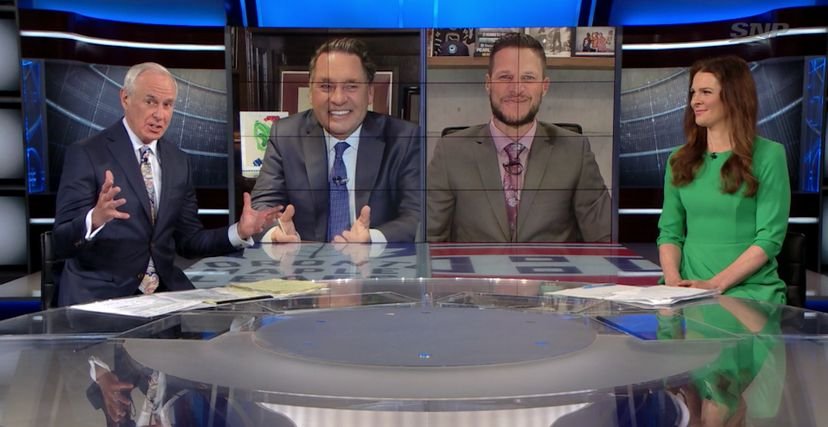
Good news if you like the way Rogers Sportsnet covers hockey in Canada. You’re about to get a whole lot more of it. In a move that sums up Gary Bettman’s unique broadcast philosophy the NHL has awarded the Canadian TV/ digital/ streaming rights to Rogers for the next 12 years. The price tag? 12 billion U.S. dollars (about $16.B CDN dollars).
While the pattern in modern sports broadcasting rights has been toward sharing the wealth among competing bidders— the NFL has six distinct partners— Bettman the contrarian has opted for a different notion. He’s all in with one Canadian partner, and let his critics STFU.
As opposed to the previous CDN national monopoly awarded to Rogers in 2013 this one bestows national rights in all languages across TV, streaming and digital for all regular-season and playoff games, plus the Stanley Cup Final and all special events. This extends to coverage in all regions. There are some concessions for Rogers to sell limited cutout packages, such as the Monday Night Amazon package they’ve created.
Presuming Pierre Poliievre doesn’t get his way with CBC, Rogers will likely piggyback on their time-sharing agreement for Saturday Hockey Night In Canada to get CBC’s network reach. (There remain many hockey fans who still think CBC has the NHL contract. Go figure.)
Translation: there will be no regional packages for TSN to produce Montreal Canadiens, Ottawa Senators or Toronto Maple Leafs games, for instance. But there will be regional blackouts, because nothing says we are proud of our product like denying it to a larger audience. Conn Smythe would be proud.
At the presser to announce the deal Rogers and Bettman were coy about how much they will charge consumers for the honour of being inundated by content in what now seems likely to be a 36-team league by the time the deal expires. Will costs be added to cable/ satellite packages? How much for streaming? With stories circulating that Rogers massively overbid for the package to get the monopoly it’s apparent that the phone company will be turning over every nickel to make it worthwhile.
Fans are apprehensive and over-saturated with hockey content already. For that reason, the NHL is now desperately looking for ways to lessen the tedium of the 82-game regular schedule with midseason content like the 4 Nations Cup or a World Cup format. In Canada’s hockey-mad environment Rogers will have a passionate market, but even the most fervent fans will only spend so much for their fix.
Already, Rogers is trumpeting its re-acquisition with commercials featuring Ron Maclean doing his breathy feels-like-home voice about how Sportsnet is the natural landing spot for hockey until many of us are dead. Bettman made cooing noises about Rogers’ commitment at the announcement.
But let us cast our minds back to 2013 when the last Rogers/ NHL deal was concocted. We were the sports media columnist at the Mop & Pail at the time and much was made that Rogers would be a technological marvel, re-inventing the way we watched hockey. There would be new camera angles, referee cams, heightened audio, refreshed editorial content etc.

As hockey fans now know Rogers dabbled in the brave new world briefly, blanched at the cost of being creative and largely went back to doing hockey the way it had always been done. Taking no risks. On some regional casts that meant as few as three or four cameras for the action.
But if you were expecting dashboard cameras and drone shots you were sadly disappointed. Similarly there was a brief stab at refreshing the pre-, mid- and postgame content. Hipster George Stromboulopoulos was brought in as a host to attract a larger female audience.
But pretty soon Strombo was gonzo, replaced by the anodyne David Amber (whose dad was once the leader of the journalist union at CBC). Women like former player Jennifer Botterill were brought in to change the gender balance on panels. They then acted pretty much like guys, chalk-talking viewers into numbness. Appointment viewing has become a fallback choice.
The move away for anything controversial came in 2019 with Rogers’ axing of Don Cherry’s Coach’s Corner in a flap over the former coach’s continuing ventures into political or cultural content. Maclean slipped the knife into his meal ticket and continued on the show. After time in limbo, doing location shoots, he was returned full-time to the desk.

As we wrote in June of 2022, the one exception to the standard “serious, sombre, even a touch grim” tone is former defenceman Kevin Bieksa. “Bieksa has been a moveable feast. His insouciance with media has become his ragging on the fellow panelists during intermissions that used to be as much fun as skating in July.” His banter with “insider” Elliotte Friedman is now a lone concession to wit on the show.
Intermissions are numbingly predictable, and Rogers’ stable of analysts and play-by-play announcers outside of HNIC is unchallenging to the orthodoxy of PxP being a radio call over TV pictures. Name one star beside Bieksa that has been produced by Rogers’ “safe” broadcast style since 2013. They’d fit in perfectly in a 1980s hockey broadcast. Now compare it with the lively Amazon broadcasts hosted by Adnan Virk and Andi Petrillo.
This leaves a lingering question. What happens to TSN? Many prefer the editorial and studio profile of TSN on Trade Deadline Day or Free Agent frenzy. TSN locked up its stars such as James Duthie and Bob McKenzie when the last deal was signed. But there isn’t enough live content this time to support keeping a full roster anymore. Who will stay and who will go? (TSN’s president Stewart Johnson is the new commissioner of the CFL).
And with Rogers taking full control of MLSE (Maple Leafs, Raptors, Argos, Toronto FC) TSN is left with the CFL and packages of NFL, golf, tennis, some auto racing and international soccer. Is that enough on which to float a network? There have been rumours that Bell, owner of TSN, is interested in divesting itself of the high cost of sports broadcasting. Should that happen— who has the money to replace them?— the effect will be seismic in Canadian broadcasting.
For now, watch how much pressure the NHL puts on Rogers to up its game. More importantly what will happen when Bettman finally retires and the league has a new vision since 1992? Rogers has sewn up its end. Will the audience go with them?
Bruce Dowbiggin @dowbboy is the editor of Not The Public Broadcaster A two-time winner of the Gemini Award as Canada’s top television sports broadcaster, his new book Deal With It: The Trades That Stunned The NHL And Changed hockey is now available on Amazon. Inexact Science: The Six Most Compelling Draft Years In NHL History, his previous book with his son Evan, was voted the seventh-best professional hockey book of all time by bookauthority.org . His 2004 book Money Players was voted sixth best on the same list, and is available via brucedowbigginbooks.ca.
-

 2025 Federal Election2 days ago
2025 Federal Election2 days agoResearchers Link China’s Intelligence and Elite Influence Arms to B.C. Government, Liberal Party, and Trudeau-Appointed Senator
-
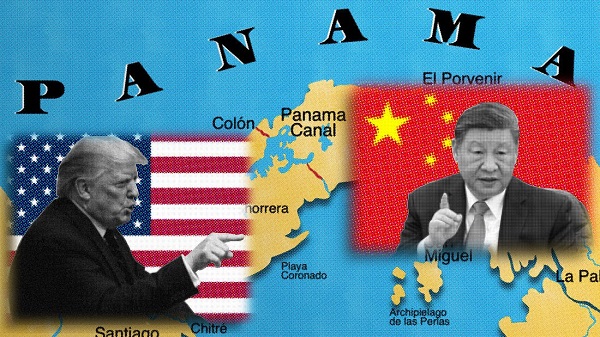
 Business2 days ago
Business2 days agoTimeline: Panama Canal Politics, Policy, and Tensions
-
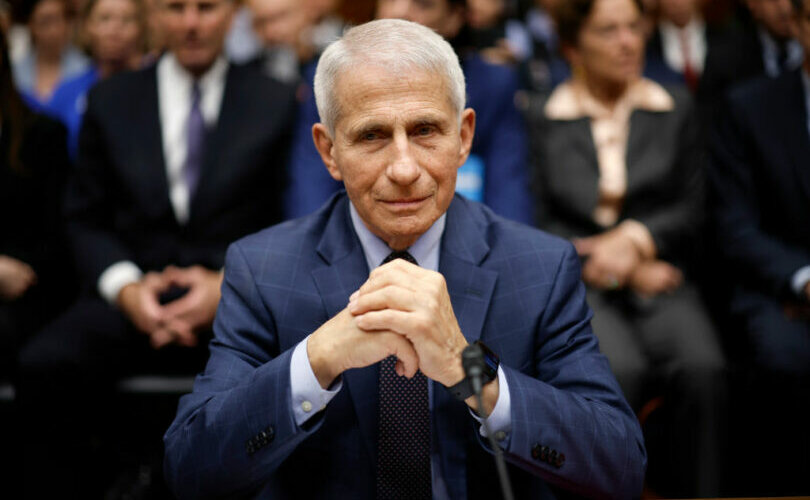
 COVID-192 days ago
COVID-192 days agoFauci, top COVID officials have criminal referral requests filed against them in 7 states
-
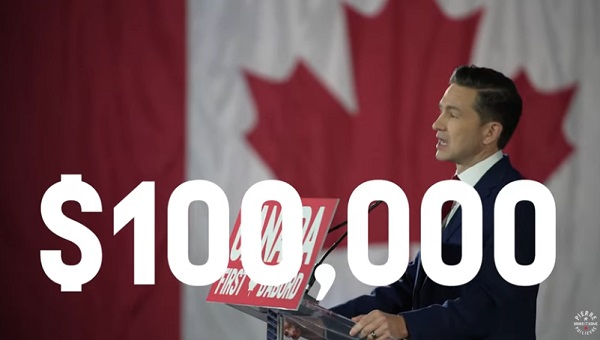
 2025 Federal Election2 days ago
2025 Federal Election2 days agoPoilievre Announces Plan To Cut Taxes By $100,000 Per Home
-

 Health2 days ago
Health2 days agoRed Deer Hospital Lottery – Previous Supporter Draw Deadline!
-
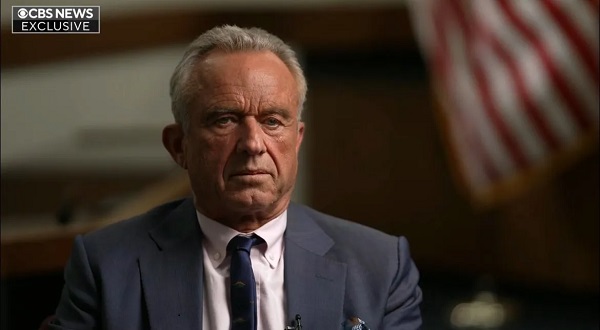
 Health2 days ago
Health2 days agoRFK Jr. Shuts Down Measles Scare in His First Network Interview as HHS Secretary
-
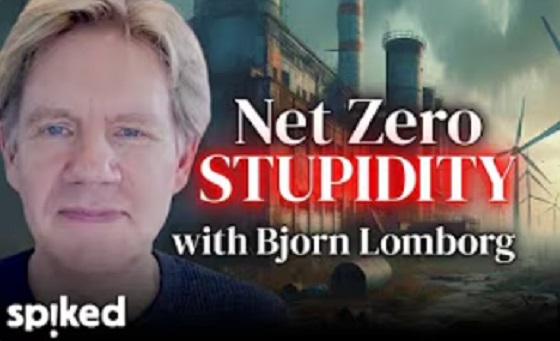
 Bjorn Lomborg2 days ago
Bjorn Lomborg2 days agoThe stupidity of Net Zero | Bjorn Lomborg on how climate alarmism leads to economic crisis
-
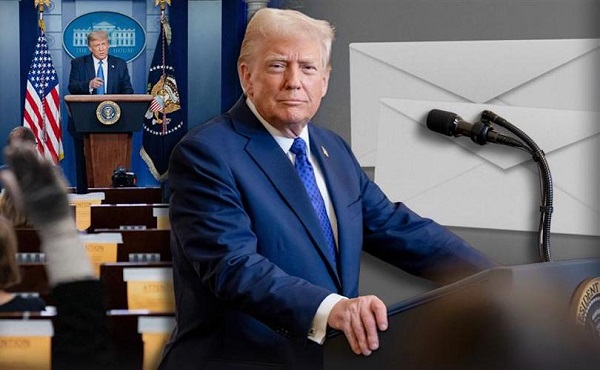
 International2 days ago
International2 days agoTrump White House will ignore reporter emails that include ‘preferred pronouns’ in signature

